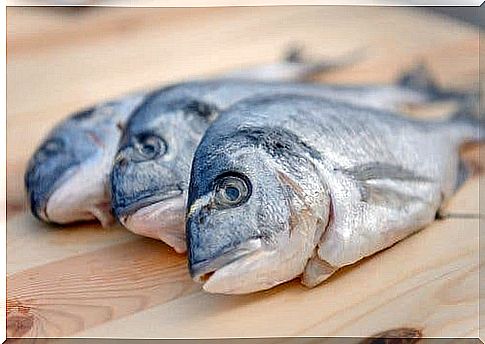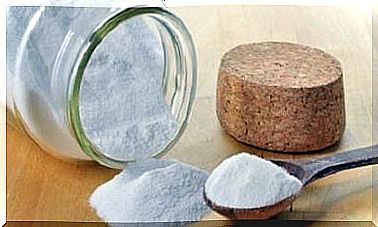Is Mercury Dangerous In Fish?
Mercury in fish is mainly found in large fatty fish. Pregnant women and children in particular should take special care when consuming them. Here in the article you will learn more about this topic.

It is common knowledge that eating fish is good for your health. Because it contains a lot of unsaturated fatty acids. But there is also some concern about the potential risks mercury can cause in fish.
Therefore, in this article we want to see whether mercury is really dangerous and how much of it you can safely consume. We’ll also tell you which fish species contain the greatest amounts of mercury. So just read on here and find out everything you need to know about this topic!
Mercury in fish
Mercury occurs naturally in soil and water. Also in plants and animal organisms. The problem, however, is that large amounts of mercury are released into the environment through humans. For example, through the incineration of solid waste or through the use of fossil fuels. The use of mercury in industry also plays a role.
And that’s how mercury gets into fish . This is because the fish ingest mercury through their food. It is therefore the case that the most predatory fish, which are also the largest, have the highest levels of mercury in their bodies.
Does the mercury in fish pose any health risks when consumed?
The toxicity of mercury depends on various factors: on the one hand, on its chemical composition and, on the other hand, on the respective type of mercury. The exposure dose also plays a role. The age at which it is produced is also important. Of all the chemical types of mercury found in food, the organic compound methylmercury is the most toxic. This is mainly found in fish and shellfish.
This chemical element can negatively affect the kidneys and central nervous system. This is especially true during the development of a fetus. This is because mercury can both cross the blood-brain barrier and penetrate the placenta. It can also cause changes in the normal development of the brain in infants. At higher doses, even neurological changes can be induced in adults.
Mercury in fish: which species are most affected?

The highest concentrations of mercury are found in freshwater and marine fish, especially in the large fish species that are at the top of the food chain.
Bigeye tuna
Tuna is one of the types of fish that contains the greatest amount of mercury. However, this does not apply equally to all types of tuna. For example, not for the tuna from the Mediterranean. Very well, however, for the bigeye tuna. This species of tuna lives in the tropical and subtropical areas of the Atlantic, Indian and Pacific Oceans.
So you can rest assured, because the bluefin tuna from the Mediterranean does not have such high mercury levels. The same goes for the yellowfin tuna.
Swordfish
The swordfish is one of the commercial fish species with the highest levels of mercury. This is a predatory fish species that eats large amounts of fish per day and therefore ultimately also absorbs a lot of mercury in its organism.
shark
Sharks also have a high proportion of mercury. This applies to everything from small species of shark to whale sharks.
pike
The pike is a large predatory fish. It feeds on all kinds of animals, including crabs. In 2003 it was included in the Spanish catalog of invasive alien species.
How much fish can you eat without putting your health at risk?

The European Food Safety Authority recommends reducing the consumption of bluefin tuna, swordfish, shark and pike. However, you have to take into account the origin of the fish. Because some bodies of water are more polluted than others.
The Joint FAO / WHO Expert Committee on Food Additives reviewed the permissible weekly intake of methylmercury in June 2003 and reduced the recommended amount from 3.3 μg / kg body weight to 1.6 μg / kg body weight.
The recommendations of the European Food Safety Authority for risk groups are as follows:
- Pregnant women or women who may be pregnant, as well as nursing mothers, should avoid consumption.
- Children under 3 years of age should also refrain from consuming it.
- Children aged 3-12 years: limit to 50 g / week or 100 g / 2 weeks. (No other species of fish in this category should be consumed in the same week.)
Recommendations for eating fish
Fish is essential for a balanced diet. Because it provides important proteins. These include vitamins A, D and B12 as well as iodine and selenium. Eating a seafood diet will help maintain cardiovascular health. However, there is no evidence of an association between mercury intake and a risk of coronary artery disease.
Looking at the benefits of DHA compared to the risk of mercury, the situation is as follows: Consumption of fish in women of childbearing age, as well as in pregnant and breastfeeding women, reduces the risk of abnormal neurological development Children.
The key point is to ensure variety when eating fish.
- Therefore, you should preferably choose other types of high-fat fish, such as: sea bass, sea bream, salmon, sardines, trout, etc.
- Healthy adults should eat high mercury species of fish, such as tuna, swordfish, pike, or shark, no more than once a week.
- You should also avoid consuming canned tuna too often. Because this study looked at students who often ate canned tuna. Higher levels of mercury were found in their hair than those who did not eat tuna.
- It is also important to alternate the consumption of the high-fat fish species with that of white fish, which contain less mercury.
Conclusion
The high levels of mercury in some fish species are a sufficient reason to eat less of it. Because there is obviously a connection between their consumption and an increased risk of health problems. However, you should n’t forget that other types of fish are very healthy and beneficial to your health.









